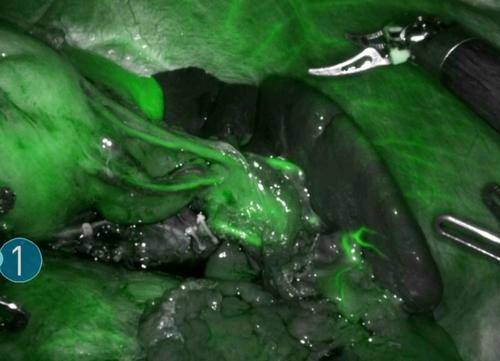机器人 Warshaw 技术,特别注意防止术后脾梗塞,保留脾血流。
IF 3.2
3区 医学
Q2 GASTROENTEROLOGY & HEPATOLOGY
引用次数: 0
摘要
在机器人华肖技术中预防术后脾梗塞需要严格评估脾脏的血流量。Shibuya 及其同事建议检查:(1) 常规脾脏颜色变化;(2) 超声多普勒检查的脾内动脉波形;(3) 使用吲哚青绿的血流;以及 (4) 来自脾动脉的搏动性反流。本文章由计算机程序翻译,如有差异,请以英文原文为准。

Robotic Warshaw technique with special attention to prevent postoperative splenic infarction preserving splenic blood flow
Prevention of postoperative splenic infarction in the robotic Warshaw technique requires rigorous evaluation of blood flow to the spleen. Shibuya and colleagues recommend checking: (1) conventional splenic color change, (2) intrasplenic artery waveform by ultrasound Doppler examination, (3) blood flow using indocyanine green, and (4) pulsatile regurgitation from the splenic artery.
求助全文
通过发布文献求助,成功后即可免费获取论文全文。
去求助
来源期刊

Journal of Hepato‐Biliary‐Pancreatic Sciences
GASTROENTEROLOGY & HEPATOLOGY-SURGERY
自引率
10.00%
发文量
178
审稿时长
6-12 weeks
期刊介绍:
The Journal of Hepato-Biliary-Pancreatic Sciences (JHBPS) is the leading peer-reviewed journal in the field of hepato-biliary-pancreatic sciences. JHBPS publishes articles dealing with clinical research as well as translational research on all aspects of this field. Coverage includes Original Article, Review Article, Images of Interest, Rapid Communication and an announcement section. Letters to the Editor and comments on the journal’s policies or content are also included. JHBPS welcomes submissions from surgeons, physicians, endoscopists, radiologists, oncologists, and pathologists.
 求助内容:
求助内容: 应助结果提醒方式:
应助结果提醒方式:


